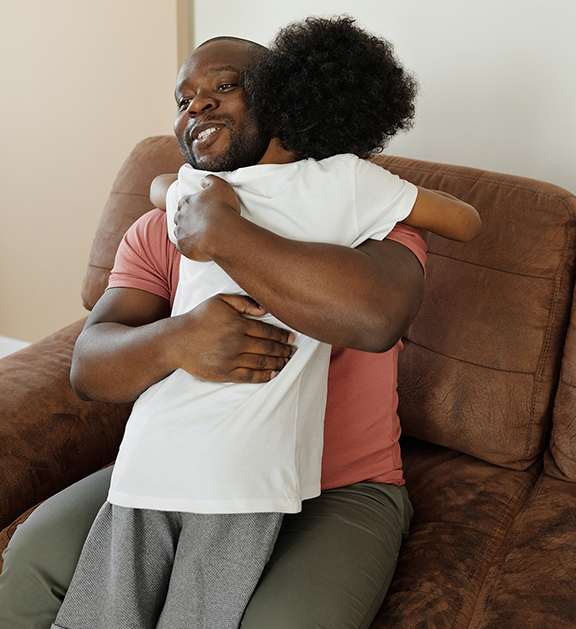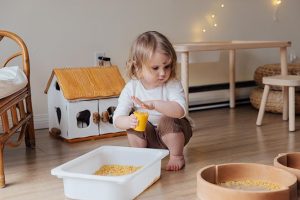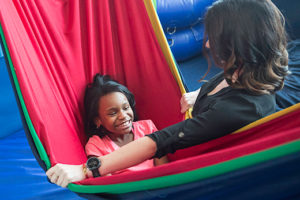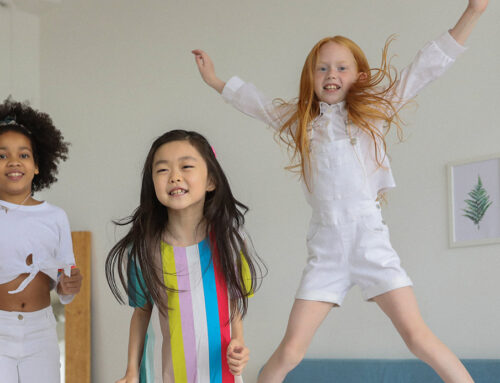Parent Strategies for the Anxious Child

Anxiety is a natural phenomenon that helps children stay safe. But, where does anxiety switch from being adaptive to pervasive to a child’s typical development?
Let’s talk about natural and adaptive anxiety. Anxiety and fear are normal responses to stress or danger that promote action, maintain focus as well as motivation! According to Beeso et al. (2011), several examples of developmentally appropriate anxiety include:
| Developmental Stage | Ages | Natural Anxiety/ Fears |
|---|---|---|
| Early Infancy | 0-6 months | Fear of loss |
| Late Infancy | 6-8 months | Shyness with strangers |
| Toddlerhood | 12-18 months | Separation anxiety |
| Toddlerhood | 2-3 years | Fears of thunder, lightening, fire, water, darkness, or animals |
| Early Childhood | 4-5 years | Fear of death or dead people |
| Elementary school | 5-7 years | Fear of specific objects, germs, natural disasters, traumatic events, school anxiety, performance anxiety |
| Adolescence | 12-18 years | Fear of rejection from peers |
However, when anxiety becomes pervasive to daily life and routines it is considered an anxiety disorder. There are three parts to anxiety including: physiological, cognitive, and behavioral. This may be seen as:
- Physiological – sweating, heart racing, hyperventilating, muscle tension, restlessness, nausea, headaches, stomach aches
- Cognitive – distortions of reality expressed as worries or fears
- Behavioral – avoiding, irritability, clingy, tantrums
 As caregivers, you have a role in supporting or contributing to your child’s anxiety. You can help to facilitate positive coping strategies to improve your child’s ability to manage stressors. Some strategies include:
As caregivers, you have a role in supporting or contributing to your child’s anxiety. You can help to facilitate positive coping strategies to improve your child’s ability to manage stressors. Some strategies include:
- Belly breathing – Inhaling to fill their belly up like a balloon, then exhale it out.
- Guided imagery – Using images to reduce stress and distract.
- Progressive muscle relaxation – Practice purposefully clenching a muscle groups, then relaxing.
- Distraction
- Supportive statements – Validate your child’s emotion and then instill confidence (e.g. I know that science makes you stressed, but you can do it!’)
- Open-ended questions – Let your child describe how and what they are feeling (e.g. How do you feel about your new school?)
- Positive self-statements – Model for your child positive statements (e.g. I can do it!)
- Reinforcement – Provide positive feedback for bravery, but also for non-performance based behaviors (e.g. effort, improvement, strengths).
- Visuals/Rating Scales – Utilize curriculums and visuals such as the Zones of Regulation, the Alert Program, or Superflex!
- Coping toolbox – Create a toolbox of strategies and sensory activities that help your child relax or distract from the stressor.
- Planned worrying time – Block out a specific chunk of time to think through stressors! Use coping skills when outside of this block!
If your child is displaying symptoms of anxiety that are pervasive to your day-to-day routines, contact Eyas Landing for a social work or occupational therapy consult!
Citations
Brown, C. & Stoffel, V. C. (2011). Occupational therapy in mental health: a vision for participation. In Davis, J. (Ed.), Anxiety disorders (pp. 167-172). F. A. Davis.
Beesdo, K., Knappe, S. & Pine, D.S. (2011). Anxiety and anxiety disorders in children and adolescents: developmental issues and implications for DSM-V. Psychiatr Clin North Am. 32(3), 483-524. doi: 10.1016/j.psc.2009.06.002

Eyas Landing is a therapy clinic with a mission to provide evidence-based and family-centered therapy services for children, adolescents, and their families. The primary goal is to deliver relationship-based interventions within the most natural environments and to empower families to reach their full potential. To achieve this goal, our highly educated, compassionate staff dedicates time and expertise to create experiences that maximize therapeutic outcomes. The strength, determination, and perseverance of our clients are evident as they succeed in therapy, and ultimately in their daily lives.
Eyas Landing offers a wide range of comprehensive services including Speech Therapy, Occupational Therapy, Physical Therapy, ABA Therapy, Social Work, Family Therapy, and Neuropsych testing. Services are provided throughout the Chicagoland area via Telehealth, In-Home, and in our state of the art clinic.
Want to learn more or you have a specific question? Feel free to connect with us here!



